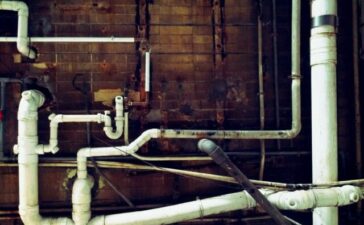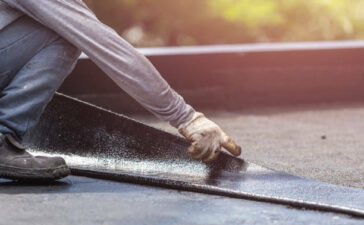When moisture penetrates building structures, it destroys the building. Therefore, to prevent and protect buildings against moisture penetration, one needs to waterproof buildings.
What is Waterproofing?
This is the method of creating an impermeable barrier that prevents water from entering buildings. It also stops water from leaving some parts of a building. This barrier can cover surfaces of the buildings such as roofs, walls, foundations, and other building structures.
Importance
Waterproofing is a very critical step every building structure has to undergo. Not carrying out this process is not the best, because, after a while of water penetrating your building, it will end up looking hideous and shorten the life span of the building.
If therefore you live in an area like Long Island NY, you should ensure you have a Long Island waterproofing service that you can rely on to do a great job for you.
Therefore, the following are the importance of waterproofing…
It Helps You Save Money
Waterproofing your building helps you save money in the long run. It might seem like it is too much because of the cost at the time, you do it, but over the years you will see that it saved you a lot of maintenance and renovation money. It is best to see it as an investment that will pay off in the long run.
Instead of focusing on the cost, try and keep in mind that you are solving a long-term issue and not a short-term one.
Averts Unexpected Health Issues
Moisture in walls and ceiling build up to become mildew and mold, this generates spores which can lead to several health issues. When one breathes in the spore released into the atmosphere, it moves into the lungs and causes problems. It is advisable to waterproof your buildings at the appropriate time to avoid causing unexpected health issues for people that resides in the building.
Protects Your Building’s Interiors from Damages
When you waterproof your building interiors, it helps prevent water damages. As we already discussed, water can damage buildings and it causes faults like cracks and rust.
It helps to protect the walls of your building from producing seepage while keeping your building healthy and beautiful.
Types
There is more than one way to waterproof your building and knowing the different types and methods best for you is essential.
Here are some of the types…
Liquid Waterproofing Membrane
This is the procedure of waterproofing roofs by applying a specialized liquid roof coat. This procedure works for all roof types, such as pitched, domed, and flat. It involves applying a massive, fully bonded, liquescent-based layer to roofs. The coating clot and becomes a rubber-like waterproof membrane that can stretch and return to its initial shape without spoiling.
You can apply this coating to roofing materials like bitumen, asphalt, felt, and concrete. It is cost-effective; it can last for over 25 years and it is said that this process costs 70% less than replacing a roof in renovation situations.
Polyurethane Waterproofing
This is composed of two elements, the reactor, and base. The base is polyol, while the reactor element is isocyanide. Click here to know more about polyurethane. The addition of these two in the right portions produces a liquid layer used for waterproofing.
Polyurethane happens to be a popular choice because of its easy installation. This method does not require much skill and guidance unlike the other types; the application is swift and can be employed post-construction. It is not difficult to install; gives a faultless finish and possesses wear resistance and long-term endurance.
Cementitious Waterproofing
These products are the easiest substances used in waterproofing. They are always available to purchase from masonry products suppliers and are also easy to combine and use. If you decide to use this product, having a long handle brush makes the application process easier. To make it more solid and durable, add acrylic additive to the product.
One big disadvantage of cementitious products is that they cannot be stretched to any point and they also cannot tolerate cracks.
Cementitious waterproof is used for the following:
- Tunnels
- Dams
- Bridges
- Subway and Railway Systems
- Lots and Parking Structures
- Docks and Cargo ports
- Concrete Dikes and River Locks
Bituminous Waterproofing
This method is created to protect housing and commercial structures. Bitumen is made of mixed organic liquid substances; they are quite sticky, waterproof, and viscous. It is used sometimes to erect roofs, in roofing felt products, or roll roofing.
Bituminous Coating Procedure
This kind of coating does not only serve as a waterproof but also for flexible protective coating. Check out this link http://what-when-how.com/materialsparts-and-finishes/bituminous-coatings/ to know more about the bituminous coating. Bitumen is a great waterproofing agent and protective coating, especially on concrete foundations.
Bituminous Membrane Waterproofing Procedure
This procedure is popularly used in low-slanted roofs because of their good performance.
Injection Grouting Waterproofing
This method involves the utilization of a semi viscous injection solution in minimum to medium penetration. It is used in concrete, bricks, and other kinds of structures such as tunnels and basements.
EPDM Waterproofing Membrane
This is an artificial rubber thin layered flexible membrane that can withstand hot and cold temperatures.
Membrane Waterproofing Procedure
The following are the main steps that are performed in every membrane method…
Preparation of the Floor
Clean the floor thoroughly, make sure it does not have any loose materials on it, oil, or mud. This is a very important aspect of all waterproofing.
Primary Coat Application
Your primary coat is to be applied to the structure of the floor. If you are going with bitumen membranes, we recommend you go with water-based or solvent-based primers.
Unroll the Membrane Sheets
Check out the right alignment, and arrange the sheet properly, unroll the membrane sheets on the floor’s surface.
Heat the Membranes
Do this with a torch; burn off the film that is on the surface of the membranes. At this point, the membrane is ready for bonding on the basic concrete surface.
Press the Heated Membrane
To make certain that the bonding is proper press the heated membrane on the concrete surface. Additional steps must be done for the edges, angles, and overlaps to confirm proper bonding.
Conclusion
It is a necessity that every building owner must not only consider waterproofing their building, but they must also ensure to do it to preserve the life span of the building and for the other reasons we discussed.






